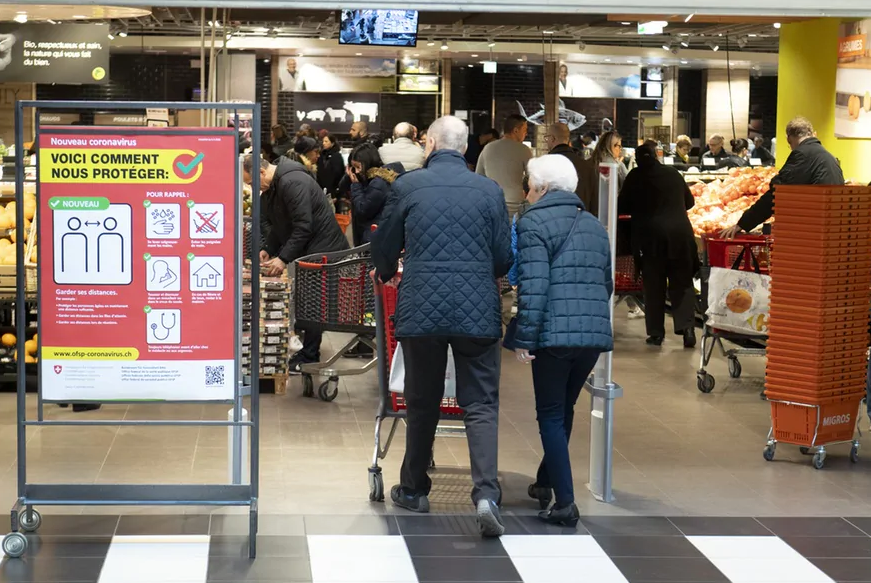Shoppers most often chose traditional retailers such as Migros and Coop over discounters and specialty shops for their groceries. Keystone / Laurent Gillieron Consumers spent 11.3% more on food and beverages in brick-and-mortar shops last year than they did in 2019, helping the food retail trade to pull in a record turnover of nearly CHF30 billion (.7 billion). In total, the average household spent CHF7,680 on comestibles, according to figures released on Thursday by the Federal Office for Agriculture (FOAG), which did not include online retail in its report. Consumers used over a third of their food budget to buy meat but spent significantly less (14%) on fruits and vegetables. More than one in 10 Swiss francs was spent on organic products. The figures also
Topics:
Swissinfo considers the following as important: 3) Swiss Markets and News, 3.) Swissinfo Business and Economy, Business, Featured, newsletter
This could be interesting, too:
Eamonn Sheridan writes CHF traders note – Two Swiss National Bank speakers due Thursday, November 21
Charles Hugh Smith writes How Do We Fix the Collapse of Quality?
Marc Chandler writes Sterling and Gilts Pressed Lower by Firmer CPI
Michael Lebowitz writes Trump Tariffs Are Inflationary Claim The Experts

Shoppers most often chose traditional retailers such as Migros and Coop over discounters and specialty shops for their groceries. Keystone / Laurent Gillieron
Consumers spent 11.3% more on food and beverages in brick-and-mortar shops last year than they did in 2019, helping the food retail trade to pull in a record turnover of nearly CHF30 billion ($33.7 billion).
In total, the average household spent CHF7,680 on comestibles, according to figures released on Thursday by the Federal Office for Agriculture (FOAG), which did not include online retail in its report.
Consumers used over a third of their food budget to buy meat but spent significantly less (14%) on fruits and vegetables. More than one in 10 Swiss francs was spent on organic products.
The figures also revealed differences in spending habits among households. Urban dwellers bought less meat and milk than those living in rural areas. Families with children used the biggest share of their budget for meat products, while those without children spent most on vegetables and alcoholic drinks.
The Swiss showed a preference for traditional retailers such as Coop and Migros – accounting for nearly 77% of consumer spending on food – over discount shops (17%) and specialised outlets such as bakeries, green grocers and gas stations (6%). According to the FOAG, the retail trade is the biggest distribution channel for Swiss agricultural products.
Switzerland consistently ranks among the most expensive countries in Europe for consumer goods, particularly food and beverages. A study of online consumer banking data in April 2020 revealed that, as a result of the lockdown imposed to limit the spread of Covid-19, Swiss consumers were spending significantly less on clothing and cosmetics and more on food.
Tags: Business,Featured,newsletter








